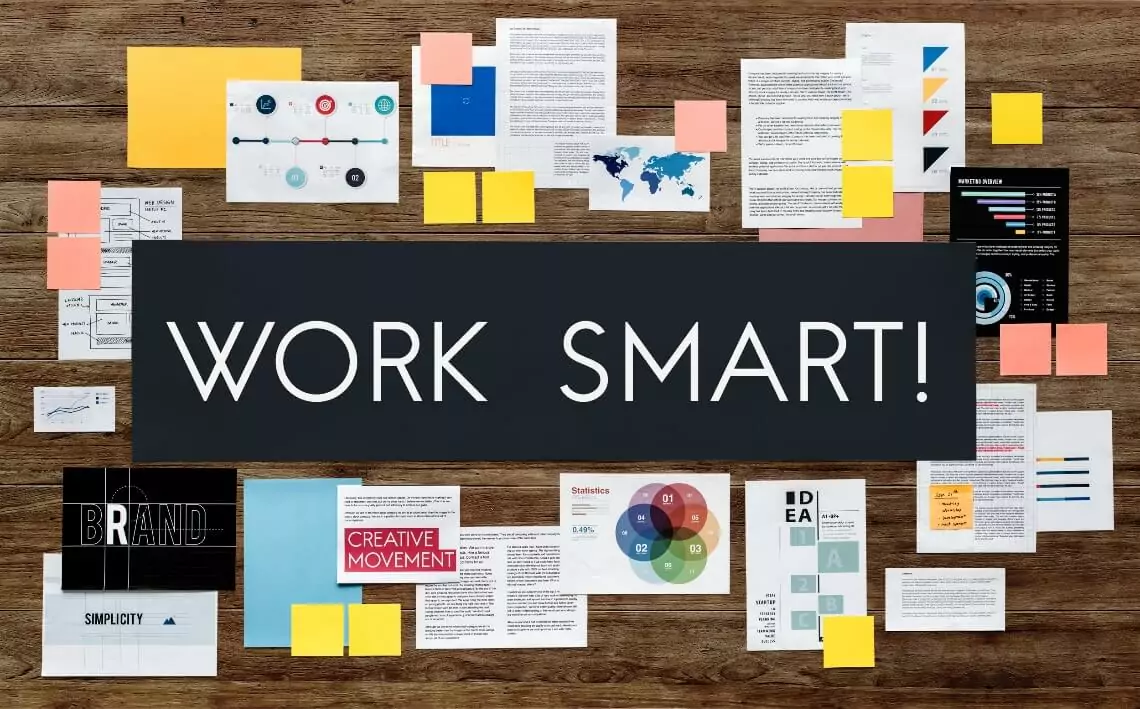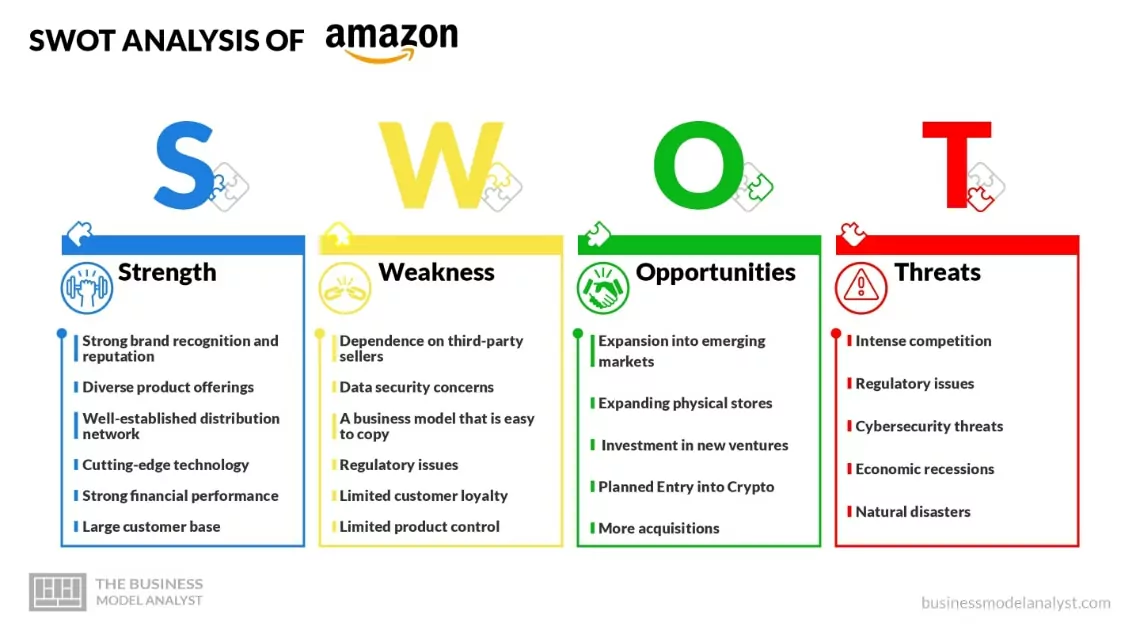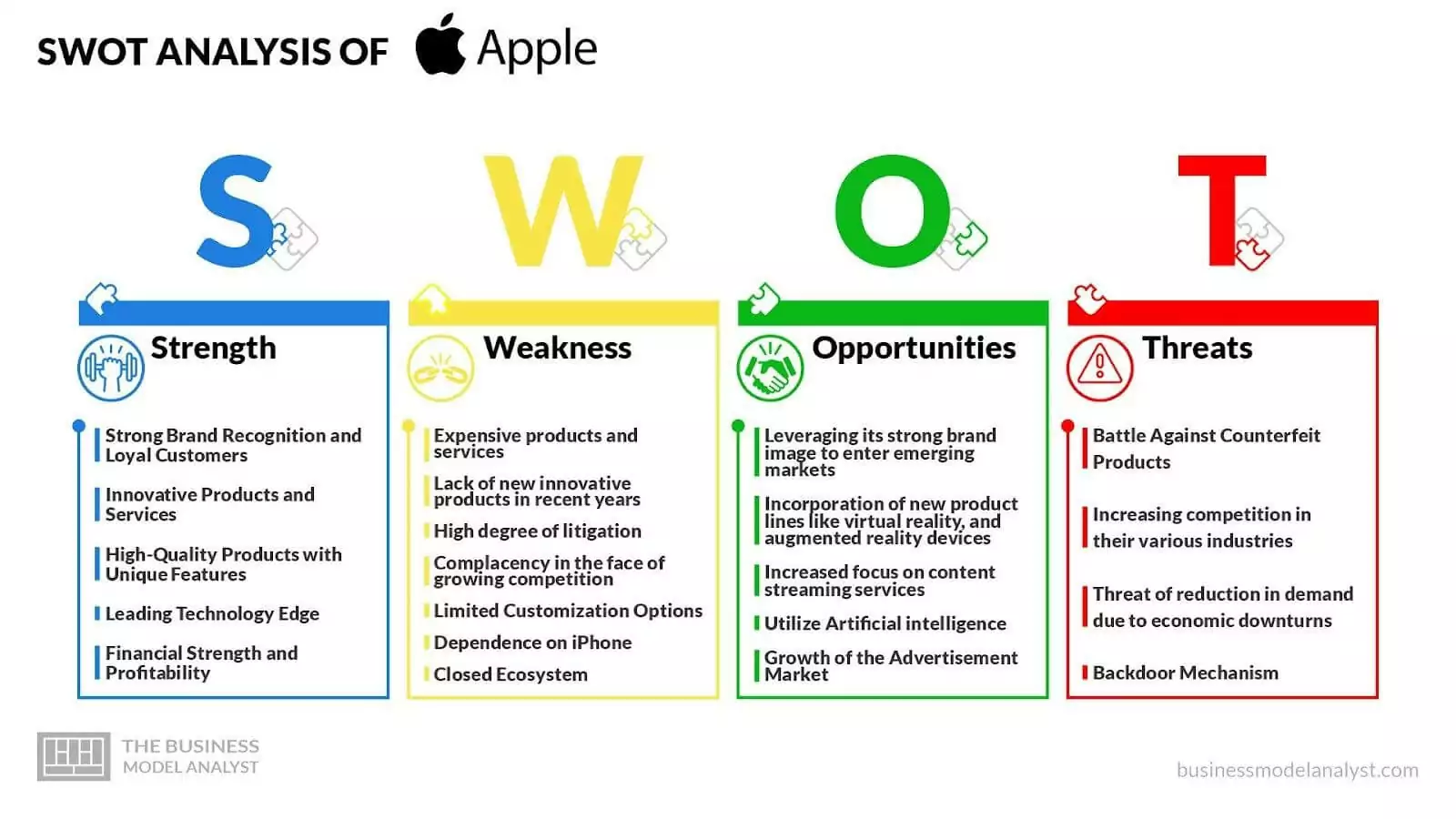Conducting a SWOT analysis for consumer electronics development is an important step for successful product planning. To make sure you don’t fail from the start, it’s vital to gather as much data as you can. Let’s take a look at how you can apply SWOT to your case when you’re trying to build a device.
The consumer electronics industry is incessantly evolving, with new products and technologies being introduced on a regular basis. It is a critical tool used to assess and evaluate any organization or business, including the hardware market. By leveraging SWOT analysis, businesses can better understand the competitive landscape and develop a strategic plan to gain a competitive edge.
Contents
- 1 What is SWOT Analysis?
- 2 What Are the 4 Steps of SWOT Analysis?
- 3 SWOT vs 5 Forces analysis
- 4 Here are some tips how to do a SWOT analysis
- 5 Grab our FREE SWOT template for your hardware product
- 6 SWOT Analysis of the Consumer Electronics Industry
- 7 SWOT examples of popular tech companies:
- 8 FAQ
- 9 Conclusion
What is SWOT Analysis?
A SWOT analysis (i.e. SWOT Matrix) is one of the main types of market research used to analyze the strengths, weaknesses, opportunities, and threats of a chosen subject, such as a product, person, brand, or industry, et cetera. When you are looking to build something absolutely new, it is beneficial to conduct this analysis, as it may give you further understanding and guard your less secure areas. It is essential to understand your competitors and to make a SWOT analysis when creating a strategic plan.
What Are the 4 Steps of SWOT Analysis?
- Indicate strengths of your products and its competitive position.
- Indicate weaknesses: disadvantages, such as resources and competitive position.
- Discover opportunities: opportunities the organization has to grow or expand into new markets or services.
- Learn more about protusc’s threats: competitors, changes in regulation, and economic conditions.
Image by rawpixel.com on Freepik
SWOT vs 5 Forces analysis
5 Forces is another useful framework if you need to analyze a competitive environment. Both SWOT analysis and Porter’s 5 Forces analysis are valuable tools for strategic decision-making. However, they are not mutually exclusive.
It helps to get a better understanding about the players in the industry. By using these frameworks together, you can gain a deeper understanding of the competitive landscape, and your decisions will be more informed.
For example,a company that sells hardware products might use SWOT analysis to identify its strengths, such as a strong brand reputation and a loyal customer base. The company might also identify weaknesses, such as a lack of innovation and a high cost of sales.
The company could then use Porter’s 5 Forces analysis to assess the competitive landscape of the hardware industry. The analysis might reveal that the industry is characterized by high supplier power and buyer power. The company might also find that there is a high threat of new entrants and substitutes.
By understanding the competitive landscape, the company can develop strategies to mitigate risks and capitalize on opportunities. For example, the company might focus on building strong relationships with suppliers and customers. The company might also invest in innovation to differentiate its products from the competition.
Image by rawpixel.com on Freepik
Here are some tips how to do a SWOT analysis
Define your objectives
A SWOT analysis can provide more value when it is focused on a specific objective, like deciding whether to launch a new product. By having a clear objective in mind, you can use the SWOT analysis to determine if introducing the product is a viable option. An example of a specific objective for a SWOT analysis could be to evaluate the feasibility of launching a new product.
Start from competitive market research
Before deciding whether to go to the blue ocean or compete with existing players, thoroughly research your market. Are there any hardware solutions available on the market? Competitive market research will give you a deep understanding of your threats and opportunities, and more importantly insights about your products. Always remember that geography matters. Always take it into consideration.
Use different resources
Once you finish a competitor’s survey, start working on your research for SWOT. These are sources you should consider:
- Internal sources: This includes information about your company, such as your products or services, your target market, your financial performance, and your competitive advantage.
- External sources: This includes information about the market, such as trends, customer behavior, and the competition.
- Experts: This includes people who are knowledgeable about your industry or your target market.
- Customers: This includes your current and potential customers.
- Surveys: This includes surveys that you conduct of your customers or potential customers.
- Secondary research: This includes information that has been published in books, articles, or reports.
Use fresh and trusted resources only
When conducting SWOT research nowadays, use only fresh and trusted resources that were taken into account post-pandemic data. So, your materials should be no older than 2020. Use reliable and trusted sources for the analysis, such as industry reports, market research, financial records, and more.
Be specific
When identifying your strengths and weaknesses of your consumer electronics product, be as specific as possible. This will help you develop more targeted strategies.
Be realistic
When identifying your possibilities and dangers , be realistic about the likelihood of these factors occurring. This will help you develop more effective strategies.
Be timely
Conduct your SWOT analysis on a regular basis so that you can stay ahead of the curve.
Grab our FREE SWOT template for your hardware product
If you want to make an impact, this is the right place to start! The AJ SWOT matrix template contains a list of questions that will help you look at the product from all angles and identify potential areas for improvement. The quality of the analysis you create will depend on how thoroughly you answer the questions and how well you understand the market dynamics. Use the template to get started, and if you need additional guidance, please refer to the provided resources.
SWOT Analysis of the Consumer Electronics Industry
Strengths
The consumer electronics industry is a large and growing market***. There are approximately 30 billion units of devices worldwide, with 19.8 being IoT devices and 10.2 being non-IoT units. The number of active IoT devices is expected to double by 2030. This growth is being driven by a number of factors, including the increasing demand for smartphones, tablets, and other mobile devices.
In addition, the consumer electronics industry is characterized by high levels of innovation. This means that businesses in this industry have the opportunity to develop new products and technologies that can give them a competitive advantage.
Weaknesses
The consumer electronics industry is also facing a number of challenges. One of the biggest challenges is the increasing competition from Chinese manufacturers. Chinese companies are able to produce high-quality products at low prices, which makes it difficult for Western companies to compete. Learn more about manufacturing out of China in our article in Forbes.
Another challenges facing the consumer electronics industry are the rising cost of materials and lead times*** (up to 52 weeks). The cost of components such as semiconductors and displays has been increasing in recent years, which has put pressure on profit margins.
Opportunities
Despite the challenges, there are also a number of opportunities for businesses in the consumer electronics industry. One of the biggest opportunities is the growing demand for smart home devices. The global smart home market is expected to grow to $136.4 billion by 2025, and businesses that can develop innovative smart home products will be well-positioned for success.
Another opportunity is the growing demand for wearable devices. The global wearable device market is expected to grow to $90.4 billion by 2025, and businesses that can develop stylish and functional wearable devices will be able to capture a share of this growing market.
Threats
The consumer electronics industry is also facing a number of threats. One of the biggest threats is the increasing popularity of subscription-based services. For example, Netflix and Spotify have become popular alternatives to traditional cable television and music players. This trend could make it difficult for businesses in the consumer electronics industry to sell standalone devices.
Another threat is the increasing regulation of the industry. Governments around the world are increasingly regulating the consumer electronics industry in order to protect consumers and the environment. This regulation could make it more difficult for businesses in this industry to operate.
Trade wars and semiconductor shortages pose significant threats to the global hardware market. However, presently, companies are exploring ways to manufacture outside of China while minimizing cost increases. Global hardware manufacturers are in the process of implementing these strategies, but there are still challenges and uncertainties lying ahead.
SWOT examples of popular tech companies:
Amazon
Amazon is a strong company with a bright future. However, the company faces a number of challenges that it will need to overcome. One of the biggest challenges Amazon faces is competing with other e-commerce companies and traditional stores. Amazon must continue to innovate and offer customers a wide range of products and services that will make them prefer Amazon’s services over the competition. Additionally, Amazon must also find ways to cut costs, optimize its fulfillment and delivery processes, and expand its presence into new markets in order to remain competitive. Another challenge for Amazon is the emergence of artificial intelligence and automation. Amazon must find ways to leverage these technologies and use them to reduce costs and improve customer experience. By taking on these challenges, Amazon can ensure its long-term success and remain a leader in the e-commerce space.
Picture: businessmodelanalyst
Apple
Apple is an incredibly powerful company that is one of the most influential in the tech industry. However, there are a number of challenges that the company faces that stand in the way of it realizing its full potential. One major challenge Apple faces is obtaining access to new markets. Apple currently dominates the market in the US, but if it wants to continue to grow and increase profitability, it will need to make moves to obtain a larger share in other parts of the world. They also face the challenge of increasing competition from companies like Google who are rapidly gaining ground in the tech industry. Additionally, with technology advancing rapidly, Apple needs to stay ahead of the curve by introducing new and innovative products and services. By addressing these challenges, Apple can remain a leader in the tech industry and continue to be successful.
Picture: businessmodelanalyst
Tesla
Tesla is well-respected for its innovation and technology in the automotive industry, and its future is looking very bright. The company is pushing the boundaries of electric vehicle technology and has become the leading manufacturer and seller of electric vehicles worldwide. However, Tesla still faces a number of challenges. The company must invest in research and development to continue to lead in EV technology. It must also work closely with local governments and industries to make sure their products are accepted around the world. Finally, Tesla must focus on their bottom line and ensure that their products are profitable. With these strategies in place, Tesla is sure to remain a leader in the tech industry for many years to come.
Picture: businessmodelanalyst
FAQ
What is the purpose of SWOT analysis for hardware development?
The purpose of SWOT analysis for hardware development is to evaluate the internal and external factors affecting the hardware industry. It helps in identifying strengths, weaknesses, opportunities, and threats that can impact the success of hardware development.
What is market SWOT analysis?
Market SWOT analysis is a process of assessing the strengths, weaknesses, opportunities, and threats of a specific market. It helps in understanding the market dynamics, competition, and potential growth opportunities in the hardware industry.
How can SWOT analysis be used in hardware development?
SWOT analysis can be used in hardware development to identify internal strengths and weaknesses, such as technological expertise and resource constraints, and the external threats and advantages, such as market trends and competition. This analysis helps in developing effective business strategies and making informed decisions.
What is weighted SWOT analysis?
Weighted SWOT analysis is a technique that assigns weights to each element of SWOT analysis based on its level of importance or impact. It allows for a more accurate evaluation of factors and helps in prioritizing them for decision-making in hardware development.
How is market size determined in hardware development?
Market size in hardware development is determined by evaluating the total sales revenue and the number of customers or units sold in a specific market for hardware products. It helps in understanding the potential demand and estimating the market potential for hardware businesses.
What is the role of supply chain in hardware development?
The supply chain in hardware development refers to the entire process of delivering hardware products from manufacturers to consumers. It involves various stages such as sourcing raw materials, production, distribution, and retail. A strong and efficient supply chain is vital for ensuring timely delivery and customer satisfaction in the hardware industry.
How can consumer behavior impact hardware development?
Consumer behavior plays a crucial role in hardware development as it influences the demand, purchasing decisions, and preferences of consumers. Understanding consumer behavior helps in developing products that meet their needs and expectations, effectively targeting the right market segment, and implementing appropriate marketing strategies.
What are the internal and external factors that can affect hardware development?
Internal factors in hardware development include factors within the organization, such as management capabilities, resources, and technological expertise. External factors include market trends, competition, economic factors, and government regulations that can impact the hardware industry.
What is the importance of business plans in hardware development?
Business plans are essential in hardware development as they outline the goals, strategies, and financial projections of a hardware business. A well-defined plan helps in attracting investors, securing funding, and providing a roadmap for the implementation of hardware development projects.
How can hardware development benefit from growth opportunities in the global market?
Hardware development can benefit from growth opportunities in the global market by expanding its reach to new markets, accessing a larger consumer base, and increasing sales revenue. Exploring global market potential can lead to business expansion, partnerships, and increased profitability for hardware companies.
Conclusion
To sum up, conducting a SWOT analysis for consumer electronics development enables businesses to understand their market position better and strategize effectively for the future. The consumer electronics industry is a dynamic and challenging industry. By conducting regular SWOT analysis, you can identify their strengths, weaknesses, opportunities, and threats. This will help you to develop strategies to improve performance of your product, and achieve your goals.
*** Nasdaq











